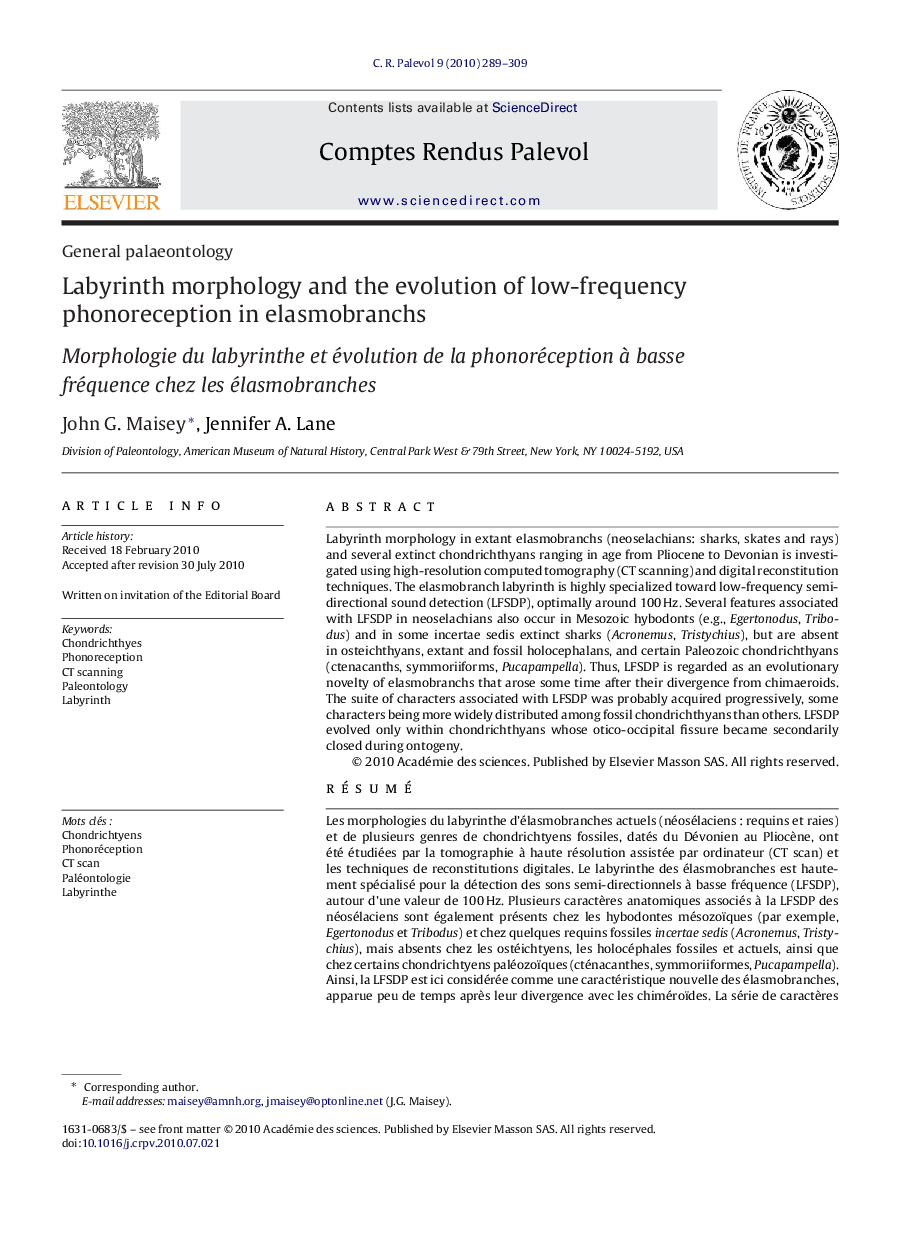| کد مقاله | کد نشریه | سال انتشار | مقاله انگلیسی | نسخه تمام متن |
|---|---|---|---|---|
| 4746121 | 1642011 | 2010 | 21 صفحه PDF | دانلود رایگان |

Labyrinth morphology in extant elasmobranchs (neoselachians: sharks, skates and rays) and several extinct chondrichthyans ranging in age from Pliocene to Devonian is investigated using high-resolution computed tomography (CT scanning) and digital reconstitution techniques. The elasmobranch labyrinth is highly specialized toward low-frequency semi-directional sound detection (LFSDP), optimally around 100 Hz. Several features associated with LFSDP in neoselachians also occur in Mesozoic hybodonts (e.g., Egertonodus, Tribodus) and in some incertae sedis extinct sharks (Acronemus, Tristychius), but are absent in osteichthyans, extant and fossil holocephalans, and certain Paleozoic chondrichthyans (ctenacanths, symmoriiforms, Pucapampella). Thus, LFSDP is regarded as an evolutionary novelty of elasmobranchs that arose some time after their divergence from chimaeroids. The suite of characters associated with LFSDP was probably acquired progressively, some characters being more widely distributed among fossil chondrichthyans than others. LFSDP evolved only within chondrichthyans whose otico-occipital fissure became secondarily closed during ontogeny.
RésuméLes morphologies du labyrinthe d’élasmobranches actuels (néosélaciens : requins et raies) et de plusieurs genres de chondrichtyens fossiles, datés du Dévonien au Pliocène, ont été étudiées par la tomographie à haute résolution assistée par ordinateur (CT scan) et les techniques de reconstitutions digitales. Le labyrinthe des élasmobranches est hautement spécialisé pour la détection des sons semi-directionnels à basse fréquence (LFSDP), autour d’une valeur de 100 Hz. Plusieurs caractères anatomiques associés à la LFSDP des néosélaciens sont également présents chez les hybodontes mésozoïques (par exemple, Egertonodus et Tribodus) et chez quelques requins fossiles incertae sedis (Acronemus, Tristychius), mais absents chez les ostéichtyens, les holocéphales fossiles et actuels, ainsi que chez certains chondrichtyens paléozoïques (cténacanthes, symmoriiformes, Pucapampella). Ainsi, la LFSDP est ici considérée comme une caractéristique nouvelle des élasmobranches, apparue peu de temps après leur divergence avec les chiméroïdes. La série de caractères associée avec la LFSDP a probablement été acquise progressivement, certains caractères étant plus largement distribués parmi les chondrichtyens fossiles que d’autres. La LFSDP n’est présente que chez les chondrichthyens dont la fissure otico-occipitale est secondairement close au cours de l’ontogénie.
Journal: Comptes Rendus Palevol - Volume 9, Issues 6–7, September–November 2010, Pages 289–309